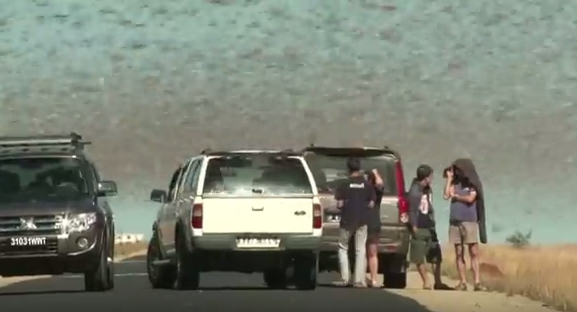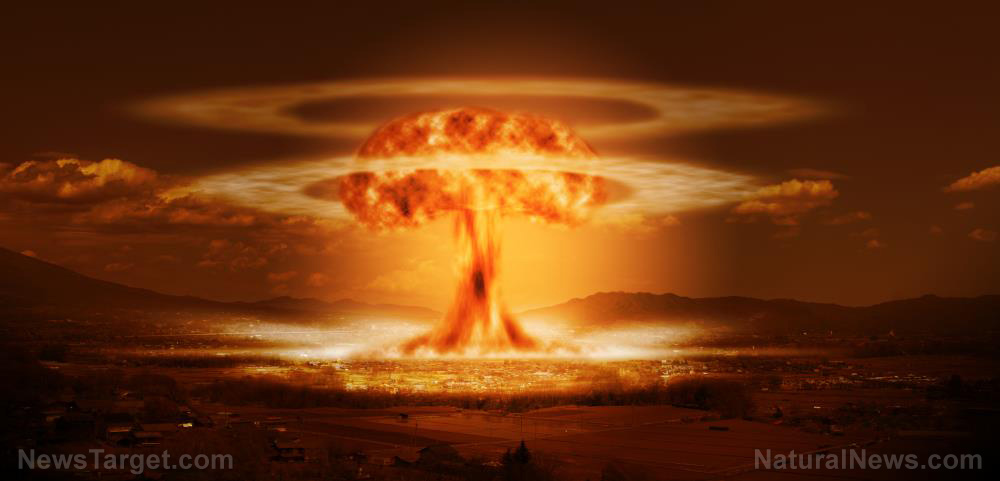Glen Canyon Dam close to shutting down as Lake Powell water levels continue to drop
07/18/2022 / By Arsenio Toledo

The amount of water in the Lake Powell reservoir feeding into the Glen Canyon dam is falling to levels “lower than thought possible,” to the point that the dam could stop producing energy altogether within a year.
Lake Powell, holding over 24 million acre-feet of water at full capacity, helps provide vital water supplies to a combined 40 million people living in the Southwestern United States. Lake Powell is also a major source of hydropower, and the water traveling through the Glen Canyon Dam powers eight generators that produce cheap and pollution-free energy for nearly six million homes and businesses across seven states.
But the water levels at Lake Powell are dwindling fast. It is currently at 28 percent of its full capacity. Back in March, water levels at the reservoir fell below 3,525 feet for the first time. This point is considered to be the critical buffer point to protect the dam’s ability to generate hydropower. (Related: Ring the ALARM! Today’s water crisis isn’t a fire drill – It’s apocalyptic.)
If the lake’s water level drops by another 35 feet, the Glen Canyon Dam will no longer be able to generate power for the millions of people who rely on it.
“There are two elevations that we’re concerned about right now,” said Gene Shawcroft, general manager for the Central Utah Water Conservancy District and Colorado River Commissioner of Utah. “The first is 3,525 feet, the second is 3,490 feet.” The latter, Shawcroft explained, is the point at which the turbines at the Glen Canyon Dam would be turned off.
“That hasn’t been done since water began flowing through the turbines in the 1960s,” he said.
“It’s a gigantic warning,” said Lisa Meiman, spokesperson for the Western Area Power Administration, a federal company that provides hydropower to 15 states through 57 dams, including the Glen Canyon Dam. “The rapid decline of Lake Powell has been surprising. There’s no doubt we are heading towards a drier future.”
Lake Powell can still be saved, but continuing drought poses challenges
To prevent the Glen Canyon Dam from shutting down, Shawcroft noted that the authorities managing the water in the various Upper Colorado River Basin states – including Colorado, New Mexico, Utah and Wyoming – are working together to release water to help replenish Lake Powell.
To this end, Shawcroft said at least 500,000 acre-feet of water has been released from the Flaming Gorge Reservoir, the largest reservoir in Wyoming, The water will flow from the reservoir, through northern Utah and down into Lake Powell where it will collect and keep the Glen Canyon Dam from having to shut down.
Over the next year, Lake Powell will also be holding back around 500,000 acre-feet of water it usually sends down to Lake Mead to safeguard its supply, at the expense of squeezing the water supply for lower basin reservoirs.
“It’s not doomsday yet,” said Shawcroft. “But we’re going to need to make some changes.”
Jack Stauss of the Glen Canyon Institute, a nonprofit that has been studying the canyon for nearly 30 years, said the import of water from other reservoirs is just a “simple band-aid fix” that will not solve the underlying problems that led to the water shortages.
“These are completely short-term measures,” said Stauss. “Flaming Gorge has a fraction of the capacity of Lake Powell. You’ll quickly drain it.”
Learn more about the water crisis engulfing America at WaterWars.news.
Watch this video from Dane Wigington as he discusses how Lake Mead, which is in danger of becoming a “dead pool” due to record-low water levels, is being drained to the last drop.
This video is from the High Hopes channel on Brighteon.com.
More related stories:
Lake Mead approaching dead pool status as Western lakes’ water levels hit historic lows.
Colorado River water levels too low; major water cutbacks imminent.
Federal government to make major cuts in water deliveries to Western states.
California water use jumped dramatically despite Governor Newsom’s pleas for conservation.
With water running out, California faces grim summer of dangerous heat, extreme drought.
Sources include:
Submit a correction >>
Tagged Under:
chaos, clean water, climate, disaster, Drought, energy supply, Flaming Gorge, Glen Canyon Dam, heatwave, hydropower, Lake Powell, panic, power, power grid, rationing, scarcity, water shortage, water supply, Water Wars, weather
This article may contain statements that reflect the opinion of the author
RECENT NEWS & ARTICLES
COPYRIGHT © 2018 PANIC.NEWS
All content posted on this site is protected under Free Speech. Panic.news is not responsible for content written by contributing authors. The information on this site is provided for educational and entertainment purposes only. It is not intended as a substitute for professional advice of any kind. Panic.news assumes no responsibility for the use or misuse of this material. All trademarks, registered trademarks and service marks mentioned on this site are the property of their respective owners.




















